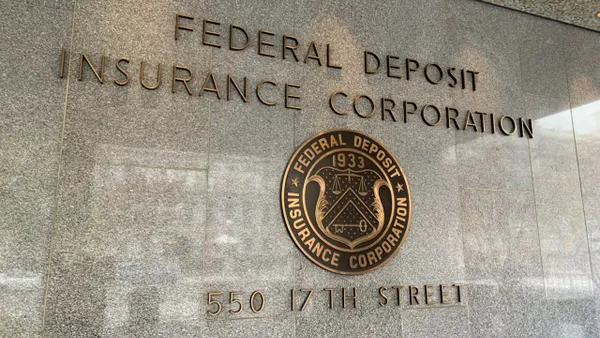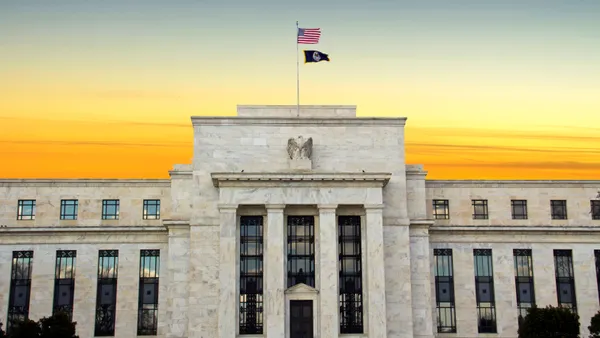Dive Brief:
- U.S. banks with over $100 billion in assets will face new rules for stricter capital requirements, a decision influenced by the recent three bank failures of institutions with assets between $100 billion and $250 billion, Martin Gruenberg, chairman of the Federal Deposit Insurance Corp., said Thursday.
- Community banks will be exempt from such a rule given their limited overall sizing and trading activities, the regulator said.
- The FDIC will collaborate with the U.S. Federal Reserve and the Office of the Comptroller of the Currency to act on the proposed rulemaking to update the 2010 Basel III standards and finalize a rule, Gruenberg noted. The rule will be released soon for public comments, he added.
Dive Insight:
“Strong, high quality capital is essential to fostering resilience in the banking system through economic cycles and periods of economic stress,” Gruenberg said while speaking at the Peterson Institute for International Economics Thursday. “Finalizing the Basel III capital standards in the United States in a timely way continues to be a top priority for the FDIC and the other federal banking regulators.”
Federal Reserve Chair Jerome Powell reiterated Gruenberg’s views while speaking in front of the Senate Banking Committee on Thursday.
“The capital requirements will be very, very skewed to the eight largest banks,” Powell said, according to Bloomberg. “There may be some increase for other banks. None of this should affect banks under $100 billion in assets.”
Silicon Valley Bank’s failure was an example of the financial instability of banks of its size, Gruenberg said.
“If we had any doubt that the failure of banks in this size category can have financial stability consequences, that has been answered by recent experience,” Gruenberg added. SVB’s losses on its securities portfolio – a significant factor in its collapse in March, should be considered while measuring its capital requirements, the regulator said.
He stressed the liquidity run at SVB might have been avoided had the Basel III standards have been maintained since “there would have been more capital held against these assets,” he noted.
Following the financial crisis in 2008, the U.S. banking agencies laid out rules to strengthen the banking system with major revisions to the capital framework, consistent with the Basel Committee on Banking Supervision standards in 2010, known as Basel III.
In 2017, the committee issued a second set of revisions.
“The stated objective of these revisions to Basel III is to reduce excessive variability of risk-weighted assets and address certain weaknesses identified during the global financial crisis,” Gruenberg said.
He noted four critical risk areas under this final phase of Basel III, including credit risk, market risk, operation risk, and the risk related with financial derivatives.
The Basel III “endgame” has attracted criticism from industry experts, saying stringent capital requirements might impede lending, affecting the broader economy.
There is a “countervailing effect” on lending every time bank capital buffers are increased, Bank of America CEO Brian Moynihan said earlier this month.
The final rule will likely be implemented before the middle of next year, following the comment period. Once the rule is finalized, it will take several years to implement it, Gruenberg pointed out.
He highlighted the banks’ resilience during the pandemic. However, he said that “it would be a mistake to consider the pandemic a true stress test of the capital adequacy of the banking system” since the government intervened to keep the institutions up and running.
“This should be the context through which we consider overall capital adequacy and the improvements to risk-based capital that are provided by the Basel III revisions,” Gruenberg said. “Maintaining robust leverage requirements is important as we move forward with implementation of the revised Basel III risk-based standards. It was an essential post-crisis reform that must not be weakened.”














